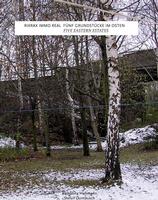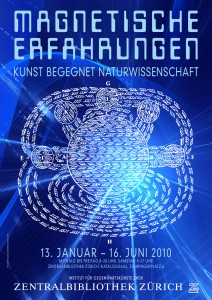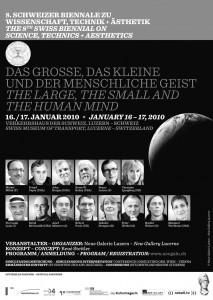The 8th Swiss Biennial on Science, Technics + Aesthetics
Abstracts: http://www.neugalu.ch/pdf/abstracts_cvs_biennial10.pdf
Saturday, January 16, 2010, 12 – 7 p.m. / Sunday, January 17, 2010, 12 – 7 p.m.
A New Gallery Lucerne conference in association with the Swiss Museum of Transport, the City of Lucerne, the Regionalkonferenz Kultur Luzern (RKK), the Swiss National Science Foundation (SNSF), and private Donors
Patronage
Dr. Felix Bauer, Meggen
Rosie Bitterli Mucha, Chefin Kultur und Sport, Stadt Luzern
Hanspeter Fischer, Architekt HTL, Ennetbürgen
Christine und Walter Graf, Bureau für Bauoeconomie, Luzern
Bodil Dahl Jørgensen, Kastanienbaum
Herbert und Ursula Kneubühl-Muheim, Claro
Remo Reginold, Präsident Freie Vereinigung Gleichgesinnter Luzern (FVGL), Emmenbrücke
Carla Schwöbel-Braun, Luzern
Dr. Anton Schwingruber, Regierungsrat, Bildungs- und Kulturdirektor des Kantons Luzern
Peter Schulz, Publizist, Luzern
Dr. Uli Sigg, Unternehmer, Mauensee
Urs W. Studer, Stadtpräsident von Luzern
Simultaneous Interpretation: English-German and German-English
Swiss Museum of Transport, Lucerne, Coronado Hall
Admission: CHF 90.00 (CHF 65.00 concessions)
Späte Anmeldung: http://www.neugalu.ch/d_bienn_2010.html#9
Late Registration: http://www.neugalu.ch/e_bienn_2010.html#9
Fragen an der Biennale sind:
- Wie können wir eine andere Beziehung zu unserer human-zentrierten Welt ins Auge fassen, zu der die Geistes- und Naturwissenschaften, Technik, unser Glaube und alles einschliesslich unserer materiell-semiotischen Ausdrucksweisen dieses Glaubens gehören?
- Wie können wir eine die soziale Welt ganz umfassende Wissenschaft denken und eine soziale Welt, die ebenso in die Welt der Fakten und Theorien involviert ist, während wir der Allgegenwärtigkeit unserer blinden Flecken Aufmerksamkeit schenken?
- Was für Prozesse des Kulturwandels können wir uns vorstellen mit Hilfe derer die vorherrschende Kultur der Verschwendung zugunsten eines mehr partizipatorischen Gesellschaftsmodells aufgegeben werden könnte?
- Welchen Bedarf an Veränderungen in den Geisteswissenschaften und den Künsten gibt es, um reflexivere Dimensionen des Kollektivbewusstseins und des sozialen Lernens zu globalen Fragen wie Klimawandel und planetarischem Fortbestehen zu schaffen?
- Kann ein zweites Weltraumzeitalter neue Betrachtungsweisen der Erde schaffen, welche die sozialen, umweltbezogenen und ökologischen Realitäten/Herausforderungen auf dem Planeten berücksichtigen?
Questions at the Biennial include:
- How can we conceive of a different relationship to our human-centered world to which the humanities, science and technology, our beliefs and everything including our material-semiotic articulations of these beliefs belong?
- How can we conceive of a science fully implicated in the social world, and a social world just as implicated in the world of facts and theories by emphasizing the ubiquitousness of our blind spot?
- What processes of cultural change can we envision by which the prevailing culture of waste could be exchanged for a more participatory model of society?
- What needs to change in the humanities and the arts in order to create more reflexive dimensions of collective consciousness and social learning about global issues such as climate change and planetary survival?
- Can a second space age create new visions of Earth, which meet the social, environmental and ecological realities/challenges on the planet?
Keynote Speakers:
Michel Bitbol, Director of Research, Centre National de la Recherche Scientifique (CNRS), Paris
Fritjof Capra, physicist and systems theorist, Berkeley
John Horgan, science writer/author, Director of the Center for Science Writings (CSW), Stevens Institute of Technology, Hoboken, USA
Kevin W. Kelley, artist, author, and entrepreneur, San Rafael, USA
Bruno Latour, sociologist, Scientific Director and Professor at Sciences Po, Paris
Pier Luigi Luisi, Professor at the Dipartimento di Biologia, Università degli Studi di Roma
Robert Poole, historian, University of Cumbria, Lancaster, UK
Harald Welzer, Director of the Center for Interdisciplinary Memory Research, Essen
Margaret Wertheim, science writer, historian of physics, Director of the Institute for Figuring, Los Angeles
Presenter
David McConville, Director of Noospheric Research, The Elumenati, Asheville, USA
Chairpersons
Christina Ljungberg, University of Zurich
Josef Mitterer, University of Klagenfurt
Isabelle Stengers, Free University of Brussels
Leader of the Panel Discussions
Peter Weibel, Chairman and CEO, Center for Art and Media (ZKM), Karlsruhe
THE SWISS BIENNIAL ON SCIENCE, TECHNICS + AESTHETICS
SCHWEIZER BIENNALE ZU WISSENSCHAFT, TECHNIK + ÄSTHETIK
P.O. Box 3501
CH – 6002 LUCERNE / SWITZERLAND
Tel.: + 41 (0) 41 370 38 18
http://www.neugalu.ch










